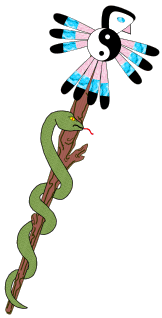OVERVIEW
Dietary fats and oils are often maligned as making a person "look fat." This is only partly true. The whole truth is that eating more of ANY of the three macronutrients - carbohydrates, protein, or fats - than you body needs will result in the excess being converted to fats and stored in un-flattering places.
Fats and oils are an important part of a healthy diet. Some fats (the so-called omega-3 and omega-6 fatty acids) are actually essential for human health. Our bodies cannot make these fats, but we must have them in order to make a number of different hormones as well as for healthy cell membranes and our brain. Our bodies can naturally make other kinds of fats whenever they are needed or whenever we eat more macronutrients than our body currently needs.
There are a number of ways to classify different kinds of fats and oils, which will be discussed below. In some cases, these classifications overlap and for this reason, the literature discussing fats and oils is sometimes ambiguous. Please click on the highlighted links for further discussion of each of these different types of fat!
Fats and Oils are Mixtures
It must be emphasized that commercially available fats and oils are mixtures that include
various proportions of saturated, mono-unsaturated, omega-3, and omega-6 oils. Each must
be judged by the relative percentage of each of these components. See for example
![Go to [Healthline]](../images/earth_hover.gif) [Healthline]
[Healthline]
In the following examples, the predominant type is described.
Basic Chemical Structure of Fats and Oils
Triglycerides
The technical name for the fats and oils found in our food is Triglycerides. Each molecule of a triglyceride is made by combining three Fatty Acid molecules with one molecule of Glycerin.
Structure of Glycerin
Glycerin is a viscous, sweet liquid that consists of a 3-carbon chain, where each carbon has an attached alcohol group (OH). It is non-toxic, and is often used as the carrier for medicines, especially for children.
Structure of Fatty Acids
All fatty acids consist of two parts:
- Carboxylic Acid Head: This has the chemical formula COOH, and has two important properties: it can react with other things, like alcohols, amines, etc, and it likes to mix with water.
- Hydrocarbon Chain Tail: This is just a string of carbons tied together, with
hydrogen hanging off the sides. There are a number of variations in the chain
that determine the properties of the fatty acid (and the resultant triglyceride).
These include:
- Carbon chain length (short, medium, or long)
- Presence of double bonds (unsaturation)
- Number of double bonds (saturated, mono-unsaturated, or poly-unsaturated)
- Configuration of the double bonds (cis or trans)
- Location of double bonds (Omega-3, Omega-9)
All fatty acids have the same COOH "head"; the variation in the "tail" is where all the interesting things happen.
It is important to note that fatty acids are NOT the same thing as mineral gases and oils, which are derived from petroleum, and resemble hydrocarbon tails without a COOH attached.
Fatty Acid Chain Length
Depending on the number of carbons in the chain, the properties are different. We can talk about "short chains", "medium chains", and "long chains"
Short chains (without an attached COOH head) are similar to butane (lighter fluid); medium chains are similar to gasoline; and long chains are similar to Vaseline (petroleum jelly).
The hydrocarbon chain tail does not like to mix with water; the COOH head does like to mix with water. In short chain fatty acids, the COOH dominates and the fatty acid is soluble in water but not in mineral oils; In long chain fatty acids, the hydrocarbon chain tail dominates and the fatty acid is insoluble in water but soluble in mineral oils. Medium chain fatty acids have limited solubility in both water and mineral oils.
Short- and medium-chain length fatty acids are liquid at room temperature, and are called Oils, whereas long-chain length fatty acids are solid at room temperature, and are called Fats.
Short Chain Fatty Acids
If the hydrocarbon tail length is only one carbon long (attached to the COOH head = total 2 carbons), then we have acetic acid, which when diluted in water is what we call "vinegar". It also gives rise to the very important acetyl group that is important to many biochemical processes in the body. [We don't usually think of vinegar as a fatty acid, but it has the structure of a fatty acid].
Other important short chain fatty acids include:
- Propionic acid (2 carbon tail attached to COOH head = total 3 carbons)
- Butyric acid (3 carbon tail attached to COOH head = total 4 carbons)
- Valeric acid (4 carbon tail attached to COOH head = total 5 carbons)
These all have characteristic unpleasant odors. E.g. butyric acid smells like rancid butter.
Medium Chain Fatty Acids
Fatty acids with a hydrocarbon tail length of 5 to 11 carbons are called medium chain fatty acids [Jadhav2023 🕮 ]. Important medium chain fatty acids include:
- Caproic acid (5 carbon tail attached to COOH head = total 6 carbons)
- Caprylic acid (7 carbon tail attached to COOH head = total 8 carbons)
- Capric acid (9 carbon tail attached to COOH head = total 10 carbons)
- Lauric acid (11 carbon tail attached to COOH head = total 12 carbons)
Note that all of these important medium chain fatty acids have a even number of total carbons and long chain have more than 12 carbons.
The fatty acids caproic, caprylic, and capric are liquid at room temperature and all have characteristic unpleasant odors similar to goats ("Capricorn"). Lauric acid is solid at room temperature and may have natural anti-viral properties.
Medium Chain Triglycerides (MCT)
Oils formed from medium chain fatty acids are sometimes abbreviated MCT, and have important health benefits [Jadhav2023 🕮 ].
Long Chain Fatty Acids
Fatty acids with a hydrocarbon tail length of 12 or more carbons are called long chain fatty acids
Saturated Fatty Acids
If every carbon of the tail has 2 hydrogens attached (except the end carbon, which has 3 hydrogens attached), then we say that the fat is saturated. This is sometimes abbreviated SFA.
Animal fat (and fat made by people) is naturally saturated, but vegetable sources such as coconut oil also contain saturated fat.
Traditional sources of saturated animal fats used in cooking include tallow (beef fat) and lard (pork fat).
 Stearic Acid
and
Stearic Acid
and  Palmitic Acid
are important SFA made in the human body.
They solids at room temperature. Stearic acid contains a total of 18 carbons
(17-carbon chain attached to COOH),
while palmitic acid contains a total of 16 carbons (15-carbon chain attached to COOH).
Palmitic Acid
are important SFA made in the human body.
They solids at room temperature. Stearic acid contains a total of 18 carbons
(17-carbon chain attached to COOH),
while palmitic acid contains a total of 16 carbons (15-carbon chain attached to COOH).
Conventional western medicine labels saturated fat as being "bad" [Blackburn1994] [Keys1959] [Keys1994]. However, more recent scientific studies show that saturated fat is not necessarily bad: [Cassiday2015] [Fogelholm2010] [Forsythe2010 🕮 ] [Kratz2013 🕮 ] [Tarino2010 🕮 ] In fact, some saturated fats are contaminated with for example Omega-6 fatty acids (see below) from corn-fed animals.
In addition, saturated fats are the most stable fats for frying foods, because they are naturally resistant to becoming rancid (see below).
Unsaturated Fatty Acids
If one hydrogen is removed on each of two adjacent carbon atoms in the chain, then we say the fatty acid is unsaturated and has a double bond between the two involved carbons.
There are several types of unsaturated fatty acids discussed below, including: cis, trans, mono-unsaturated, poly-unsaturated, Omega-3, and Omega-6.
Unsaturated fats come mostly from vegetable sources, but are also found in products from animals that eat vegetable sources.
Some are essential for human nutrition, but cannot be made by humans!
Good unsaturated fats include: Mono-unsaturated, Omega-3 (see below).
Bad unsaturated fats include: Trans, too much Omega-6, rancid fats
Rancid Fats and Oils
Fats and oils can react with oxygen (oxidize) to make toxic substances. When this happens we say the fat has become rancid. Rancid fats and oil taste and smell bad. Poly-unsaturated fats (see below) are especially susceptible to becoming rancid, especially when heated; Saturated fats are least susceptible.
Cis and Trans Fatty Acids
When a double bond is formed (as above), there are two different geometric shapes that
can result, which we call cis (from Latin, "this side")
and trans (from Latin, "across" or "opposite").
These two different shapes are called
 geometric isomers.
The cis form is generally natural, whereas the trans form usually occurs during chemical processing.
geometric isomers.
The cis form is generally natural, whereas the trans form usually occurs during chemical processing.
The chemical process most responsible for creating trans fats is called Partial Hydrogenation. In this process, a poly-unsaturated oil such as cottonseed oil or soybean oil is mixed together with hydrogen gas in a high-temperature vat containing a catalyst such as nickel.
In general, cis and trans forms have different physical and chemical properties, especially in regards to differences in enzymatic processing in biochemical metabolism in the body.
The food industry likes hydrogenated fats because they are less likely to become rancid, and therefore increase the shelf-life of processed foods
The trans form is generally considered unhealthful and products containing significant amounts, such as
 Crisco and margarine
should be avoided
[Mente2009 🕮 ]
Crisco and margarine
should be avoided
[Mente2009 🕮 ]
An additional down-side to hydrogenated, partially hydrogenated, and other highly processed oils is that the processing destroys the beneficial vitamins and anti-oxidants found in unprocessed oils.
Mono-unsaturated Fatty Acids (MUFA)
When a fatty acid contains only one double bond, we say that it is mono-unsaturated. This is sometimes abbreviated MUFA.
MUFAs are an important part of the Mediterranean Diet. Important examples of MUFA include olive oil and avocado oil; avocado oil is better for frying because it has a higher "smoke point."
Early-harvest extra-virgin cold-pressed olive oil is the best because it is the least processed and contains the highest amounts of beneficial polyphenols and vitamin E.
See also: [Herting1963 🕮 ].
Poly-unsaturated Fatty Acids (PUFA)
When a fatty acid contains more than one double bond, we say that it is poly-unsaturated. This is sometimes abbreviated PUFA.
Poly-unsaturated fatty acids are further characterized by specifying how close to the tail-end of the hydrocarbon tail the first double bond occurs. This location is given an "omega" number, such as omega-3 or omega-6.
[Omega is the last letter of the Greek alphabet; alpha is the first].
Omega-3 and Omega-6 PUFAs
Some PUFAs are essential - required for human health, but cannot be made by humans. These include some Omega-3 and Omega-6 fatty acids:
- Omega-3: Best source is cold-water seafood; Generally has anti-inflammatory benefits;
E.g. EPA (eicosapentaenoic acid) and DHA (docosahexaenoic acid).
 ALA
(alpha linolenic acid) is also an Omega-3 fatty acid, which is favored by
vegans because it is derived from plant seeds rather than animals; unfortunately, it is
not biologically active and must be converted to EPA and DHA through very inefficient
enzymatic processes (5% and 0.5% efficient, respectively).
DPA (docosapentaenoic acid) is another omega-3 fatty acid; it's claim to fame is that it
can be converted in the body to either EPA or DHA, depending on the body's needs.
ALA
(alpha linolenic acid) is also an Omega-3 fatty acid, which is favored by
vegans because it is derived from plant seeds rather than animals; unfortunately, it is
not biologically active and must be converted to EPA and DHA through very inefficient
enzymatic processes (5% and 0.5% efficient, respectively).
DPA (docosapentaenoic acid) is another omega-3 fatty acid; it's claim to fame is that it
can be converted in the body to either EPA or DHA, depending on the body's needs.
- Omega-6: Best source is seed oils like corn oil; Generally has pro-inflammatory effects; E.g. AA (arachidonic acid). Our immune system depends on inflammatory processes.
Balance is Essential! Anthropologists believe that primitive humans had a diet with approximately equal parts of Omega-6 to Omega-3 oils (i.e. a 1:1 ratio). Unfortunately modern agricultural processes give a "Standard American Diet" (SAD) that has too much Omega-6 and not enough Omega-3 (typically a ratio of 20:1). This is a Problem! When the ratio of Omega-6 to Omega-3 is too high, the body experiences too much inflammation, which results in:
- Increased pain
- Type 2 Diabetes
- Cardiovascular disease
- Neural degeneration
- Accelerated aging
Problem Solved: Get an Omega-Check blood test from Sonora Quest (or similar test from other providers) and a standard lipid test. If the ratio of AA to (EPA + DHA) is greater than 3 or TG is greater than HDL then follow Dr. Weyrich's "Oil Change Diet".
Dr. Weyrich's Oil Change Diet
- Minimize foods containing seed oils from your diet (corn oil, safflower, canola, grapeseed, sunflower, soybean, etc). READ LABELS!
- Instead, use foods containing olive oil.
- Minimize eating animal products that are fed seed oils (listed above). This includes most commercial meats - "You are what your food eats".
- Instead, eat "grass-fed" animal products and "safe" fish.
Generally speaking, fish is a good source of the essential Omega-3 oils EPA and DHA.
However, there is concern that sea-food may be contaminated with mercury, pesticides, and other environmental pollutants.
To minimize these pollutants and maximize good Omega-3 oils:
- Avoid farm-raised fish (especially tilapia and catfish)
- Avoid large fish (like shark)
- Prefer smaller wild-caught cold-ocean fish (like sardines)
- Take a high-potency purified fish oil (Dr. Weyrich prefers Zone Labs)
- Vegans may prefer the non-animal sourced algal oil, made from algae. Do not rely on alpha linolenic acid from flax seeds, etc.
- Avoid most Fried Foods! Commercial fried foods are fried in seed oils high in Omega-6 and sometimes rancid. (Have you ever felt a bad aftertaste when eating fast-food French fries? - that's rancid).
- At home use fresh avocado oil to fry with; Do not use olive oil to fry with.
- How Much Fats and Oils Should I Eat Each Day,and What Kind?
This is a question that should be addressed on a individual basis with your physician.
But generally: The Zone Diet is a good balanced starting point.
Avoid low fat or high fat diets unless required by a diagnosed medical condition.
Much of your fat/oil calories should be from Extra Virgin Olive Oil;
Remaining fat/oil calories should be from a variety of:
- Organic grass-fed free-range animal meats, poultry, eggs, and dairy
- Wild-caught cold water fish (sardines, herring, tuna, salmon, etc.)
- Fresh unroasted nuts and Extra Virgin Coconut Oil
- Avocado, cacao, sesame, borage, and other specialty oils
- Purified high-potency Omega-3 fish or algal oil
Solulability Trends
The length of the hydrocarbon tail determines the overall solubility of the fatty acid in water versus mineral oil, and the transport mechanism within the body.
Melting-point Trends
Triglycerides can be either liquid or solid, depending on the temperature. As a general rule:
- Fats with higher carbon count solidify at lower temperature.
- Saturated fats solidify at a lower temperature than unsaturated fats with the same carbon count.
- Trans-fats solidify at lower temperature than cis-fats with the same carbon count.
Spoilage Trends
In general, the more double bonds there are in a particular fat, the faster it will "spoil", become "rancid", or (technically) "oxidize."
Smoke Point
TBD
Processing
Minimally processed vegetable oils (e.g. olive oil) contain other constituents such as polyphenols, tocopherols, and other antioxidants. These oils are labeled as "virgin"; other vegetable oils (e.g. corn oil) are more highly processed and have less of these beneficial constituents.
Other Lipids
In addition to the fatty acids and triglycerides, there are other substances that are given the general name of lipids:
-
Cholesterol
-
Phytosterols
-
Other steroids and sterols
-
Phospholipids - compounds formed by joining a fatty acid to a phosphate group (instead of glycerin)
Fats and Cell Membranes
All cells are enclosed by a "membrane" that separates the inside of a cell from the outside. These cell membranes are basically formed from phospholipids as a "bilayer" in which the inside and outside of the membrane exposes the phospholipids "heads" that interact well with aqueous (water) content inside and outside the cell.
The fatty acid "tails" are found in between the inside and outside of the cell membrane. These tails do not like water, but do like to associate with each other.
These membranes contain a mixture of saturated and unsaturated fats, as well as steroids including cholesterol, and various protein structures that serve as signaling receptors and markers as well as transport portals.
Comparing "Low Fat" Diets with "Low Carb" Diets
Evidence that "low fat/high carb" diets are better:
Evidence that "high fat/low carb" diets are better:
DOSAGE
- Therapeutic Dose: Depends on diet theory, lean body mass, activity level, and genetics.
REFERENCES
-
[Blackburn1994] Henry Blackburn. The Seven Countries Study: A Historic Adventure in Science. In: Ancel Keys, Hironori Toshima, Yoshinori Koga, Henry Blackburn (eds). Lessons for Science from the Seven Countries Study. Springer, Tokyo (1984). DOI:
 10.1007/978-4-431-68269-1_2
[Cassiday2015] Laura Cassiday. Big Fat Controversy: Changing Opinions about Saturated Fats. INFORM: International News on Fats, Oils, and Related Materials, Jan. 2015, pp. 342-377. DOI:
10.1007/978-4-431-68269-1_2
[Cassiday2015] Laura Cassiday. Big Fat Controversy: Changing Opinions about Saturated Fats. INFORM: International News on Fats, Oils, and Related Materials, Jan. 2015, pp. 342-377. DOI: 10.21748/inform.06.2015.342
[Fogelholm2010] Mikael Fogelholm. Faculty of 1000 Evaluation for Meta-Analysis of Prospective Cohort Studies Evaluating the Association of Saturated Fat with Cardiovascular Disease. F1000 - Post-Publication Peer Review of the Biomedical Literature, Nov. 2010. DOI:
10.21748/inform.06.2015.342
[Fogelholm2010] Mikael Fogelholm. Faculty of 1000 Evaluation for Meta-Analysis of Prospective Cohort Studies Evaluating the Association of Saturated Fat with Cardiovascular Disease. F1000 - Post-Publication Peer Review of the Biomedical Literature, Nov. 2010. DOI: 10.3410/f.1947957.1501056
[Forsythe2010] Cassandra E Forsythe, Stephen D Phinney, Richard D Feinman, Brittanie M Volk, et al. Limited effect of dietary saturated fat on plasma saturated fat in the context of a low carbohydrate diet. Lipids. 2010 Oct;45(10):947-62. PMID:
10.3410/f.1947957.1501056
[Forsythe2010] Cassandra E Forsythe, Stephen D Phinney, Richard D Feinman, Brittanie M Volk, et al. Limited effect of dietary saturated fat on plasma saturated fat in the context of a low carbohydrate diet. Lipids. 2010 Oct;45(10):947-62. PMID: 20820932 DOI:
20820932 DOI:  10.1007/s11745-010-3467-3 PCMID:
10.1007/s11745-010-3467-3 PCMID:  PMC2974193
[Herting1963] David C Herting, Emma-Jane E Drury. Vitamin E Content of Vegetable Oils and Fats. J Nutr. 1963 Dec;81(4):335-42. PMID:
PMC2974193
[Herting1963] David C Herting, Emma-Jane E Drury. Vitamin E Content of Vegetable Oils and Fats. J Nutr. 1963 Dec;81(4):335-42. PMID: 14100992 DOI:
14100992 DOI:  10.1093/jn/81.4.335
10.1093/jn/81.4.335  PAYWALL
[Jadhav2023] Harsh B Jadhav, Uday S Annapure. Triglycerides of medium-chain fatty acids: a concise review. J Food Sci Technol. 2023 Aug;60(8):2143-2152. PMID:
PAYWALL
[Jadhav2023] Harsh B Jadhav, Uday S Annapure. Triglycerides of medium-chain fatty acids: a concise review. J Food Sci Technol. 2023 Aug;60(8):2143-2152. PMID: 35761969 DOI:
35761969 DOI:  10.1007/s13197-022-05499-w PCMID:
10.1007/s13197-022-05499-w PCMID:  PMC9217113
[Keys1959] Ancel Keys, Margaret Keys. Eat Well and Stay Well. Doubleday (1959).
PMC9217113
[Keys1959] Ancel Keys, Margaret Keys. Eat Well and Stay Well. Doubleday (1959). Amazon
[Keys1994] Ancel Keys, Hironori Toshima, Yoshinori Koga, Henry Blackburn. Lessons for Science from the Seven Countries Study: A 35-Year Collaborative Experience in Cardiovascular Disease Epidemiology. Springer, Tokyo (1994). DOI:
Amazon
[Keys1994] Ancel Keys, Hironori Toshima, Yoshinori Koga, Henry Blackburn. Lessons for Science from the Seven Countries Study: A 35-Year Collaborative Experience in Cardiovascular Disease Epidemiology. Springer, Tokyo (1994). DOI: 10.1007/978-4-431-68269-1_2.
[Kratz2013] Mario Kratz, Ton Baars, Stephan Guyenet. The relationship between high-fat dairy consumption and obesity, cardiovascular, and metabolic disease. Eur J Nutr. 2013 Feb;52(1):1-24. PMID:
10.1007/978-4-431-68269-1_2.
[Kratz2013] Mario Kratz, Ton Baars, Stephan Guyenet. The relationship between high-fat dairy consumption and obesity, cardiovascular, and metabolic disease. Eur J Nutr. 2013 Feb;52(1):1-24. PMID: 22810464 DOI:
22810464 DOI:  10.1007/s00394-012-0418-1
[Mente2009] Andrew Mente, Lawrence de Koning, Harry S Shannon, Sonia S Anand. A systematic review of the evidence supporting a causal link between dietary factors and coronary heart disease. Arch Intern Med. 2009 Apr 13;169(7):659-69. PMID:
10.1007/s00394-012-0418-1
[Mente2009] Andrew Mente, Lawrence de Koning, Harry S Shannon, Sonia S Anand. A systematic review of the evidence supporting a causal link between dietary factors and coronary heart disease. Arch Intern Med. 2009 Apr 13;169(7):659-69. PMID: 19364995 DOI:
19364995 DOI:  10.1001/archinternmed.2009.38
[Tarino2010] Patty W Siri-Tarino, Qi Sun, Frank B Hu, Ronald M Krauss. Meta-analysis of prospective cohort studies evaluating the association of saturated fat with cardiovascular disease. Am J Clin Nutr. 2010 Mar;91(3):535-46. PMID:
10.1001/archinternmed.2009.38
[Tarino2010] Patty W Siri-Tarino, Qi Sun, Frank B Hu, Ronald M Krauss. Meta-analysis of prospective cohort studies evaluating the association of saturated fat with cardiovascular disease. Am J Clin Nutr. 2010 Mar;91(3):535-46. PMID: 20071648 DOI:
20071648 DOI:  10.3945/ajcn.2009.27725 PCMID:
10.3945/ajcn.2009.27725 PCMID:  PMC2824152
PMC2824152






